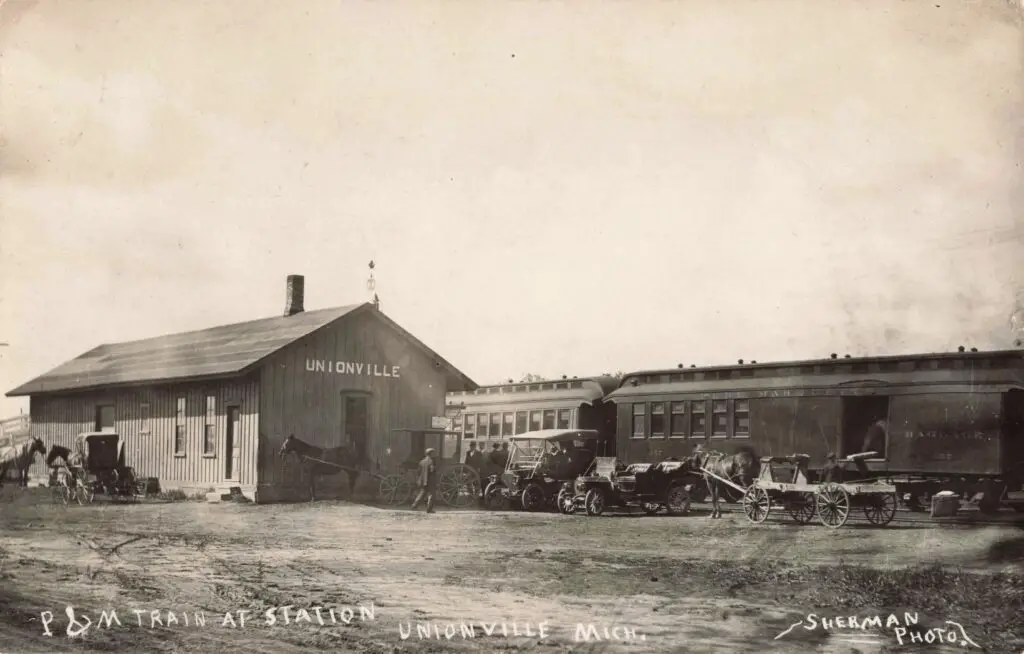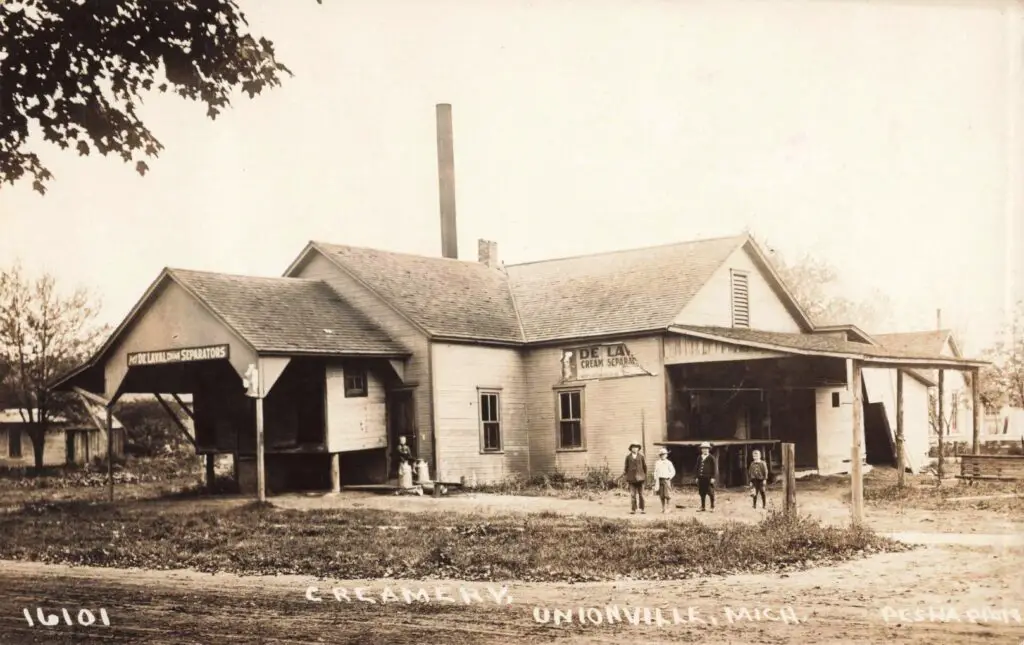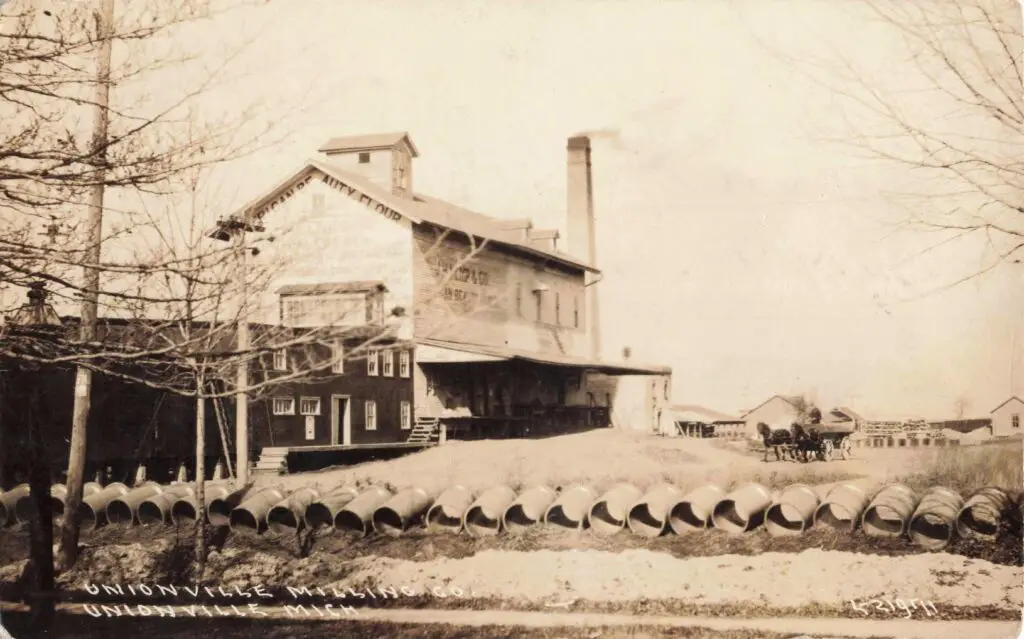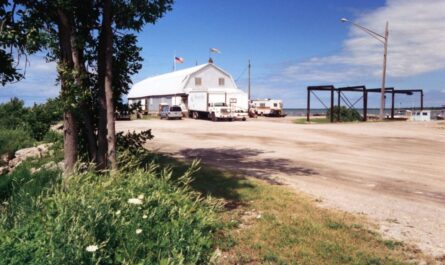Unionville, Tuscola County, Mich. – Unionville Michigan was first settled in 1854 when Horace C. Marvin and Andrew Marshall arrived and cleared land on the future village site. Marvin built the first log house and opened a general store. He reportedly named the community “Unionville” after his hometown of Union, Ohio. The first post office (then called “Akron”) began service in 1857; by the Civil War era a new Unionville post office was established with Marvin as postmaster. Unionville Michigan was officially incorporated as a village on April 1, 1879.
Unionville Michigan’s Quick Growth
Unionville Michigan experienced rapid development due to its strategic location and resources.

Early Unionville grew as a local trade center. In spring 1856 merchants Samuel Covey and William J. Davis brought a stock of goods to the settlement, and hotelier Horace Marvin later expanded the operation into the Unionville House. A village council formed after incorporation, quickly improving streets, sidewalks and public services. In 1881 the Saginaw, Tuscola & Huron Railroad reached Unionville (following local fund-raising for right-of-way), giving the village a depot and rail access for its businesses.
The arrival of the railroad in 1881 connected the town to broader markets, giving farmers and merchants a reliable route to ship goods—and a reason to invest.

One key industry was dairy. The Unionville Creamery, outfitted with De Laval cream separators, served as a hub for area farmers who hauled fresh milk to town. The equipment inside represented innovation, but the work remained labor-intensive. It was a community operation that relied on trust, routine, and strong backs.
Unionville’s Churches
Religious and educational institutions arose by the 1870s. Methodists and Moravian (German Protestant) congregations organized meetings in the 1850s–1860s, with a Methodist church built by the 1870s. In 1870 local Germans formed a Moravian church (with a new building in 1872). Unionville’s Baptist congregation incorporated in 1875 and dedicated a church in 1877, and in 1876 residents founded St. Paul’s German Evangelical Lutheran Church. Education began early: the first school opened in 1858–59, and by 1882 Columbia Township (which contains Unionville) operated five schoolhouses serving over 300 students.
Agraculture

Unionville’s economy was tied to its natural resources. The region’s pine forests drove an initial lumber boom, but by the 1880s farmers were converting cleared land to crops. Orchard fruit, hay and grains (wheat, oats, corn, potatoes) became staples. An 1880 account noted “orchards loaded with fruit” and predicted growth once rail service arrived.
The J.H. Kemp & Co. grain elevator rose alongside the tracks, its American Beauty Flour label a familiar brand in the region. Wheat, oats, and sugar beets filled railcars bound for Detroit or Flint. Meanwhile, the Unionville Milling Company processed grain for local and regional use, while a nearby coal mine added a rare industrial dimension to the Thumb’s farm-based economy.

Over the decades Unionville remained a small agricultural village. Census figures show steady but modest growth – about 414 people in 1890 to roughly 500 by 1940. German-Americans made up many residents (reflected in church affiliations and surnames), and other ancestries included Polish and Irish in smaller numbers. By 1950 the village population was about 530. Through mid-century Unionville retained its rural character, with farms, a few family businesses and enduring community institutions as the legacy of its 19th-century founders.
Unionville Michigan History: 7 Rare Photos That Reveal a Remarkable Past
Unionville, Michigan’s early 20th-century story isn’t one of fame or fortune—but of function, grit, and continuity. These images capture a village that worked hard, adapted slowly, and valued what it built. From rail cars to cream cans, the rhythms of life in Unionville were rooted in community and shaped by the people who stayed. The town may be quieter now, but its foundations—laid in brick, timber, and track—still stand.



